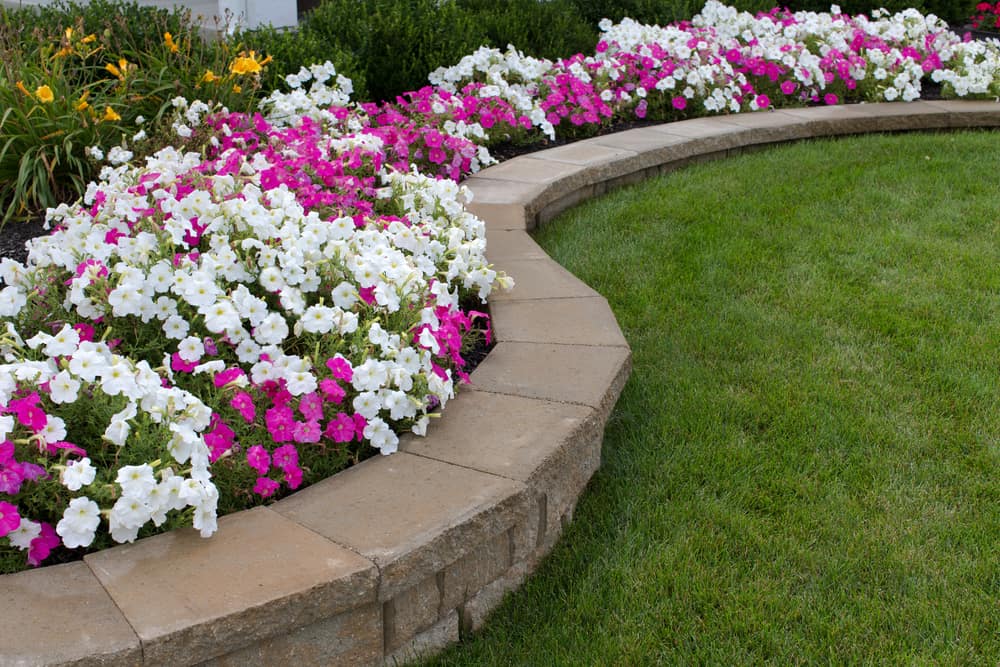When done properly, a carefully designed flower garden can be a tasteful addition to any home. However, experienced gardeners will tell you that creating a thriving flowerbed is no easy task, especially when it comes to water management.
If allowed to accumulate, the same life-giving water that your plants and flowers depend on for survival can also cause detrimental effects to your garden.
If you have water accumulating in your flowerbed, what can you do to fix the problem and prevent it from happening again?
Identify Where the Water is Pooling
The first step in resolving a drainage issue is to locate where the water is accumulating. Naturally, (due to the laws of gravity) water will travel to and remain in the lowest point in your garden or flowerbed.
While water can pool anywhere in your garden, in most cases, it will collect along the edge of the bed, where mulch or rock meets grass.
It’s also important to identify any sources of excess water, such as gutters and downspouts. Faulty or misplaced downspouts can funnel gallons of extra water straight into your flowerbed in a matter of seconds.
The Home Depot recommends regularly inspecting and cleaning your downspout joints to ensure that they are functioning correctly and directing roof run-off away from your home, and in this case, bypassing your flowerbed.
Decide Where You Want the Water To Go
After you’ve identified where and why the water is pooling, next, you have to decide where you want it to go. Trickier than it seems. Improperly rerouting storm run-off will only relocate the problem, leaving you with an unwanted puddle somewhere else in your yard.
Generally, allowing water to drain into your lawn is a safe option. Grass, and the soil beneath it, will usually soak up moisture quickly and efficiently. However, if your yard lacks a slope or has a natural low-point, you may want to consider directing water to the street or having your lawn leveled.
Choose a Solution
The final step in removing the water from your flowerbed is to decide on the right method of drainage. In general, there are two methods of preventing water from collecting in your garden or flowerbed: Installing underground drainage pipes and elevating your flowerbed. Essentially these two methods handle the same problem in different ways.
Install Drainage Pipes
Underground drainage pipes are the simplest way to move water from one place to another. Installation of these pipes is relatively self-explanatory. Place a flexible pipe into a pre-dug trench leading from your water-accumulation-prone garden to the street or part of your yard where you desire the water to drain.
In most cases, these pipes are entirely buried under the surface of your lawn. However, other pipe systems, such as french drains, utilize pebbles or stones to cover the pipe.
Elevate the Flowerbed
This is the process of raising the height at which your flowers are planted. You can achieve this in a variety of different ways depending on your budget and style preferences. Some prefer the look of wooden flower boxes, while others opt for a retaining wall style flower bed.
The added height naturally reduces the likelihood of unwanted water pooling and allows for more versatile drain pipe options if you choose to combine the two methods.
Premier Water Management Service in Oklahoma City
If you’re struggling to keep the water out of your flowerbed, we want to help you! Our team of landscape experts has the experience, knowledge, and skills needed to keep your yard clean and puddle free. Contact us today to schedule a free estimate.




